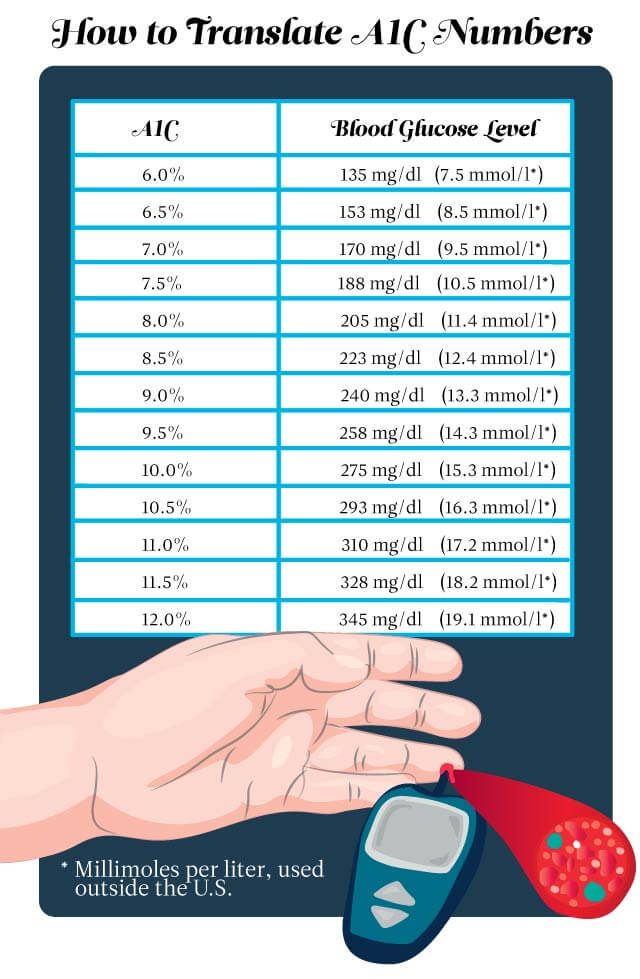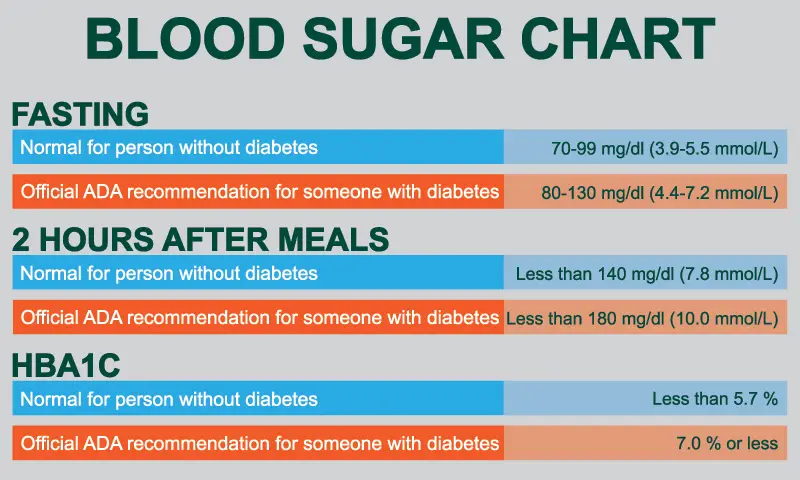Fasting glucose and hemoglobin A1c (HbA1c) are tests that measure your blood sugar levels. Both tests can be and are commonly used to determine if you have diabetes or not. Fasting glucose is the measurement of blood sugar after a period of fasting (about 8 hours). HbA1c is a more accurate way to measure blood sugar because it takes into account how long your blood sugar has been high (as opposed to just measuring at one point in time). HbA1c measures your average blood sugar level over an approximately 90 day period.
The two most essential tests for evaluating your blood sugar health are hemoglobin A1c (HbA1c) and fasting glucose. These tests can help you and your doctor determine if you have diabetes and if you do have diabetes – how much control you have over your diabetes and how well you manage it. However, the two tests give us some different information so let’s explore both tests and determine the differences and advantages to each. It is also vastly important that everyone test their blood sugar whether they are diagnosed with diabetes or not.
What is fasting glucose?
Fasting glucose is a blood test that measures your blood sugar levels after fasting for 8-12 hours. It’s one of the most critical tests in diabetes management and testing, as it indicates your current health status and what type of care you need to prevent further complications. However, a fasting blood glucose test is merely a snapshot in time of what your blood glucose level is at that particular moment.
According to the American Diabetes Association, an increase in fasting glucose can be an early sign that you’re at risk for developing type 2 diabetes (T2DM). While high fasting glucose isn’t always indicative of T2DM, it may also indicate other conditions, such as prediabetes or metabolic syndrome.
What is HbA1c?
HbA1c is a measurement of your average blood sugar over the last 3 months (approximately). A lower HbA1c value is better and measures how well your blood sugar has been controlled over the previous 3 months.
It can be calculated from a single test or multiple tests; in either case, it gives you a good idea of how well your treatment works to keep your blood sugar within target ranges.
The American Diabetes Association has suggested that glycated hemoglobin (HbA1c) be used instead of fasting blood glucose for diabetes diagnosis. HbA1c is an essential predictor of long-term glycemic management since it might represent the previous two to three months’ cumulative glycemic history. HbA1c is not only a valid indicator of chronic hyperglycemia, but it also corresponds strongly with the risk of long-term diabetic complications. Elevated HbA1c has also been identified as an independent risk factor for coronary heart disease and stroke in both diabetic and non-diabetic people. The useful information offered by a single HbA1c test has made it a credible biomarker for diabetes prognosis and diagnosis.


The HbA1c test is a precise and easy-to-use test with on-the-spot results that can be a valuable tool in confirming diabetes diagnosis, particularly in low- and middle-income countries and difficult-to-reach populations. Even though HbA1c has been approved for diabetes diagnosis, several testing methodologies and cutoff limits are still being contested in most countries worldwide. However, combining FGT and HbA1c improves the diagnostic accuracy of these independent assays. HbA1c’s predictive value stems from its unique capacity to measure retrospective glycemic management as well as forecast the lipid profile in diabetes patients.
Click here for more information on how to test your HbA1c levels at home with Biocoach.
Which is more important: fasting glucose or HbA1c?
Firstly, it’s important to understand the difference between fasting glucose and HbA1c. Fasting glucose is a measure of your blood sugar level before you eat, it gives you your blood sugar level at a particular moment in time. HbA1c measures the average blood sugar concentration over the past 3 months.
So which one is more accurate or “better?” A recent study compared these two measurements and found that people with fasting glucose above 100 mg/dL had a higher risk of developing diabetes complications than those with an HbA1c below 7.5%. So while both are useful tools when monitoring your diabetes care, if you have an elevated fasting glucose level, it may be time to take action sooner rather than later!
The American Diabetes Association has suggested glycated hemoglobin (HbA1c) as a potential alternative to fasting blood glucose for diabetes diagnosis. The ability to indicate the cumulative glycemic history of the previous two to three months makes HbA1c an essential biomarker of long-term glycemic control.
What are the advantages of using the HbA1c test versus the blood glucose test?
The HbA1c (or A1C) test requires a small blood volume to be drawn, which evaluates the proportion of red blood cells with glucose molecules attached, indicating the glucose level in the blood. Because red blood cells in any blood sample are a mix of different ages, the HbA1c test provides a “weighted” average of blood glucose control over the previous 2-3 months. To detect diabetes, the fasting plasma glucose test measures a person’s blood glucose level after at least eight hours without food or beverages.
Elizabeth Selvin, Ph.D., MPH, the study’s principal author, asserts that HbA1c offers important advantages over fasting glucose. The HbA1c test provides superior stability, minimal intraday variability, and values that are unaffected by stress and illness, and the patient is not required to fast before the test.
What is the difference between fasting glucose and HbA1c?
The first thing to know is that fasting glucose and HbA1c are tests for diabetes diagnosis and management. Here’s a quick breakdown of the difference between the two:
- Fasting glucose measures your blood sugar level after fasting for 8 hours (usually overnight). This test can help you determine if you have prediabetes or if you have diabetes. If this number’s high, it means your body is having trouble processing glucose correctly.
- HbA1c measures average blood sugar levels over the last three months—it’s a more long-term look at how well your body is taking in and using glucose in relation to carbohydrates in your diet.
- Fasting glucose measurements are taken after a person has fasted for at least eight hours, while HbA1c is taken after a person has fasted for at least 12 hours.


Which is more accurate, HbA1c or fasting glucose?
Diabetes complications can be reduced significantly if diagnosed early and type 2 diabetes can even be reversed with certain lifestyle changes in many cases. Although HbA1c is an accurate predictor of problems, there is little information available about its accuracy in diabetes diagnosis. A cross-sectional population-based study was used to investigate the relationship between HbA1c and FBS.
According to this study, FBS appears to be more reliable than HbA1c in distinguishing diabetes from non-diabetic patients. If you want to use HbA1c in screening, the standard cutoff value of 6% is an adequate level for distinguishing diabetics from non-diabetics.
Conclusion
In conclusion, HbA1c is the most important test for measuring blood glucose levels. It measures both fasting and postprandial glucose levels. It is also used to assess how well your body is handling its insulin production, which depends on genetics and lifestyle factors like diet and exercise. The fasting glucose test measures only fasting levels of blood sugar without considering the effects of eating food or taking medication before testing begins.
As a human being, you have two main sources of energy: carbohydrates and fats. Carbohydrates are the primary source of energy for most cells in your body; they are stored in your muscles and liver as glycogen. When you eat carbs, your pancreas releases insulin to help those carbs enter your cells and be used for energy.
However, if you have diabetes—which is usually caused by an inability to produce adequate insulin or respond properly to it—the glucose from food can’t get into the cells where it’s needed. Instead, it stays in the bloodstream and builds up over time. This can lead to serious complications such as heart disease and kidney failure.
The more frequently you check your blood glucose levels, the better you’ll be able to manage them and avoid these complications.
To learn more about blood glucose monitoring and to check out blood glucose and HbA1c meters, click here.
References
- Sherwani, S. I., Khan, H. A., Ekhzaimy, A., Masood, A., & Sakharkar, M. K. (2016). Significance of HbA1c Test in Diagnosis and Prognosis of Diabetic Patients. Biomarker insights, 11, 95–104. https://doi.org/10.4137/BMI.S38440
- Fennell, D. (2015, March 18). A1C shows predictive advantage. Management. Retrieved November 3, 2022, from https://www.diabetesselfmanagement.com/blog/a1c-shows-predictive-advantage
- Ghazanfari, Z., Haghdoost, A. A., Alizadeh, S. M., Atapour, J., & Zolala, F. (2010). A Comparison of HbA1c and Fasting Blood Sugar Tests in General Population. International journal of preventive medicine, 1(3), 187–194.

